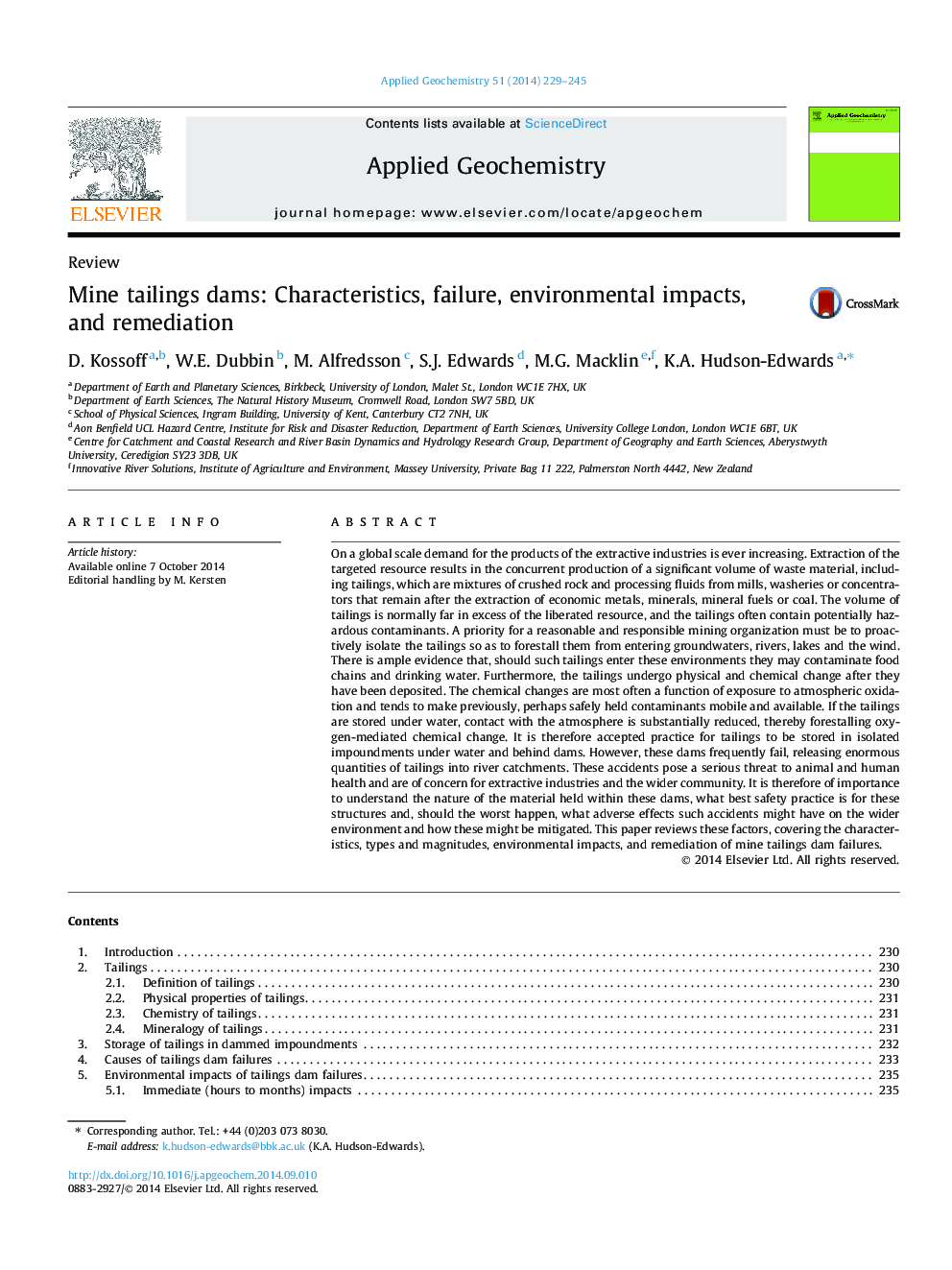| Article ID | Journal | Published Year | Pages | File Type |
|---|---|---|---|---|
| 6335083 | Applied Geochemistry | 2014 | 17 Pages |
Abstract
On a global scale demand for the products of the extractive industries is ever increasing. Extraction of the targeted resource results in the concurrent production of a significant volume of waste material, including tailings, which are mixtures of crushed rock and processing fluids from mills, washeries or concentrators that remain after the extraction of economic metals, minerals, mineral fuels or coal. The volume of tailings is normally far in excess of the liberated resource, and the tailings often contain potentially hazardous contaminants. A priority for a reasonable and responsible mining organization must be to proactively isolate the tailings so as to forestall them from entering groundwaters, rivers, lakes and the wind. There is ample evidence that, should such tailings enter these environments they may contaminate food chains and drinking water. Furthermore, the tailings undergo physical and chemical change after they have been deposited. The chemical changes are most often a function of exposure to atmospheric oxidation and tends to make previously, perhaps safely held contaminants mobile and available. If the tailings are stored under water, contact with the atmosphere is substantially reduced, thereby forestalling oxygen-mediated chemical change. It is therefore accepted practice for tailings to be stored in isolated impoundments under water and behind dams. However, these dams frequently fail, releasing enormous quantities of tailings into river catchments. These accidents pose a serious threat to animal and human health and are of concern for extractive industries and the wider community. It is therefore of importance to understand the nature of the material held within these dams, what best safety practice is for these structures and, should the worst happen, what adverse effects such accidents might have on the wider environment and how these might be mitigated. This paper reviews these factors, covering the characteristics, types and magnitudes, environmental impacts, and remediation of mine tailings dam failures.
Related Topics
Physical Sciences and Engineering
Earth and Planetary Sciences
Geochemistry and Petrology
Authors
D. Kossoff, W.E. Dubbin, M. Alfredsson, S.J. Edwards, M.G. Macklin, K.A. Hudson-Edwards,
